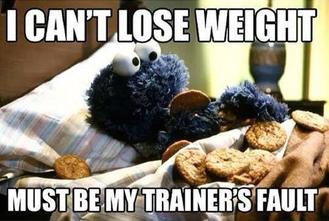 As a Registered Dietitian, my clients (and friends, and family…) are frequently asking me for my take on popular diet trends. I’ve said it before and I’ll say it again: everyone is looking for that “magic bullet,” the one change that they can make to improve their health or lose weight. But the simple fact of the matter is its not nearly that simple. There is a reason we RDs go to school for 4+ years to earn our credential: nutrition is complicated. That said, I feel as though my clients have a right to know fact from fiction. So when asked about popular diet trends my response usually is to present them with the facts (good and bad) and let them decide for themselves. In this post I’ll do just that: break down several popular diet trends that I am asked about frequently and present the facts about each. Let me be clear in that I am not recommending these diets nor am I not recommending them. I am simply providing you with the information that is accurate and unbiased. Always consult your doctor and preferably an RD before making changes to your diet or exercise routine. Before I delve into the nitty gritty, let’s take a step back and discuss the broader topic: diets. The word “diet” can mean a lot of things to a lot of people. Technically speaking it refers to what you eat on a day-to-day basis. That means the good, the bad and of course, the ugly. However the word “diet” in our culture has come to mean something entirely different. When we say we’re “on a diet” or “following an xyz diet” we often are referring to a temporary way of eating to achieve some health or fitness outcome. But once we reach our goal what happens to the diet? Most of us fall off the wagon. Very rarely do people consider diets to be lifelong modifications, largely because they are restrictive in one way or another, and as such are not sustainable. The three diets presented in this post are no exception. Keto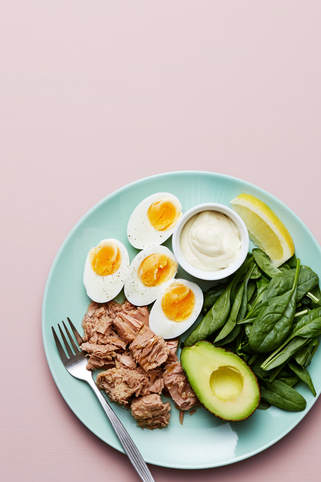 One of the most popular diet trends that has gained substantial traction over the last few years is the ketogenic diet (KD). Originally studied as a treatment option for medication-resistant seizure disorders, the KD has evolved into the latest diet trend for weight loss, diabetes management and overall health. As the name suggests, the KD aims to put the body in a state of ketosis. This is accomplished by extreme carbohydrate restriction thus forcing the utilization of fat as a primary fuel source. While there is certainly validity to the use of the KD under certain conditions and medical supervision, the diet is not a one-size-fits-all for overall health. For the last several years the term “keto” has become an increasingly prominent buzzword in both the popular media and healthcare field. For decades the KD has been an effective strategy for managing treatment-resistant seizure disorders, although the exact mechanism for its success is still unclear. More recently the KD has gained notoriety for its success in lowering HgA1c levels and improving glucose control in patients with type 2 diabetes.1,2 Additionally the diet does appear to produce weight loss and improve blood lipids in patients with and without diabetes. However it remains unclear as to whether these results are the result of patients reaching a state of ketosis or a simple calorie deficit.1-3 Despite the evidence to support KD’s success, the question remains of its sustainability. The severe carbohydrate deficit promoted by the KD excludes foods like fruits, some vegetables and whole grains that contain vital nutrients essential for cellular function and optimal health. Excluding these food groups for prolonged periods of time puts individuals following the KD at risk for a variety of nutrient deficiencies that could negatively impact immune health, gut function and overall health. Furthermore, many patients report negative effects such as irritability, headaches, lack of energy, GI distress and sleep disturbances.4 Finally, research has shown that patients who lose weight following the KD quickly gain it back once carbohydrates are added back into the diet. Conclusion: Approach keto caution. Historically the KD has been used as a last resort to treat seizure disorders that were not remediable by other means, and was only done so under strict medical supervision that included a Registered Dietitian specialized in the diet and it’s potential side effects. Although it can be easy to be swayed by all of the hype, including clinical data, surrounding the “keto craze,” keep in mind that a diet that so drastically restricts a fundamental macronutrient, will likewise drastically affect the big picture of your health, not just one component of it. Intermittent FastingAnother growing trend in the “diet” world is the concept of intermittent fasting (IF). IF regimens vary depending on the needs of the individual, but most involve either days/hours of fasting followed by days/hours of unrestricted intake. For example, patients may follow alternate-day fasting in which they fast for an entire day followed by a day of unrestricted eating. Others may follow a 5:2 fast in which they “fast” 2 days per week by eating only 25% of their usual intake and eating 100% of their usual intake on the remaining 5 days per week. Others still will restrict food consumption to certain hours of the day (typically midday) and fast the remaining hours outside of that timeframe. Regardless of the specific regimen followed, all intermittent fasting works in the same way: a calorie deficit is created by periods of restricting food intake. Now, let’s get into the science. Many popular news articles will promote the idea that biologically, the human metabolism evolved to operate under intermittent fasting conditions. This is based on historical data from the days of hunting and gathering when our ancestors did indeed experience periods of fasting and famine followed by periods of abundant food supply. While the historical context of this assumption is likely correct, the impact it has had on the human metabolism is merely a speculation. To date, there is no scientific evidence to suggest that intermittent fasting in any way improves nutrient metabolism or health outcomes. In fact, several studies have found the opposite. In clinical trials IF showed no significant improvement in weight loss outcomes, insulin sensitivity, blood glucose control or blood lipids when compared to standard calorie restriction (25% reduction in calorie intake) on a daily basis.5-7 Furthermore, patients in the IF group reported more adverse effects such as irritability, hunger and low-energy level, and had significantly higher drop out rates than their comparison groups.6,7 Conclusion: Science suggests that IF is approximately as effective as any other form of calorie restriction in producing weight loss, insulin sensitivity and other health outcomes. That said, there does not appear to be any advantage of intermittent fasting over any other form of calorie restriction. However there do appear to be more drawbacks. While IF may work well for some, patients in clinical trials reported feeling worse, and maintained the diet for less time than other diets. Furthermore, IF provides no guidance as to the types of foods consumed during non-fasting periods. While I’m sure some individuals who follow intermittent fasting regimens do eat well-balanced diets, I am always hesitant to endorse a diet does not provide instruction as to how to maintain a balanced diet within the parameters of the diet. Paleo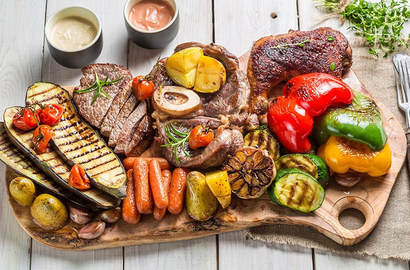 Last, but certainly not least: the Paleo diet. This diet restricts food consumption to foods that were eating during the Paleolithic Age, i.e. the stone-age. The argument here is similar to that of intermittent fasting: the human body has evolved to eat certain types of foods that were available to our ancestors. Similarly Paleo advocates claim that the refined, processed foods that comprise the majority of our modern, “western” diet are not optimal for human health. Foods included on the Paleo diet are whole, raw foods such as raw fruits and vegetables, nuts and seeds, lean meats and fish. Foods excluded include grains, legumes, dairy products, refined sugars and processed foods. So let’s break it down point by point. As an RD, I’m all for a diet rich in fruits and vegetables. Personally, I don’t feel as though they need to be raw to be healthy. However I will agree that the less processing of any food (including cooking), the more it retains it’s natural nutritional value. That said, Paleo’s avoidance of grains and legumes concerns me as both food groups are a great source of fiber, vitamins and minerals. Additionally, a hallmark of the Paleo diet is an avoidance of any processed food. Here I think there is a good point. Many of the foods we eat today wouldn’t even be recognized as food just a few generations ago. Industrialization of agriculture and the food industry has drastically changed the way we eat, and as a consequence, the way we think about food. Conclusion: Parts of the Paleo diet are nutritionally sound: specifically, the focus on fruit and vegetable consumption and avoidance of processed foods. That said, avoiding foods such as grains and legumes could lead to deficiencies if consumers do not possess the nutrition knowledge necessary to consume a balanced diet. So what should you do?So there you have it: my take on three of the biggest diet trends of the 21st century. When it comes to diet I personally believe in the mantra “Everything in moderation, including moderation.” In my professional opinion, it is unrealistic, and in many ways unsafe, to practice severely restrictive eating for long periods of time. So I always encourage my clients to make small changes that they can maintain, and over time they will make big differences. I gladly welcome comments, questions and of course, appointments! References:
10 Comments
So let's be honest here: as much time as we all spend oogling over perfectly crafted meals on Pintrest, how much time do we actually spend preparing our own meals? For most of us it's very minimal. Some of us feel like we lack the necessary skills, some of us just don't have the time or budget to shop for 1000 ingredients and most of us are just plain busy. Below is a handful of quick, easy and cheap meals that you can prepare when time is of the essence and you're in a pinch! Pesto Salmon with Garlic Rice and Green Beans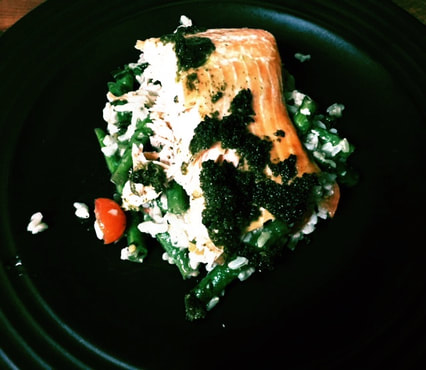 This little diddy is easy on the wallet, simply to assemble and PACKED with flavor. Ingredients: 4 4oz salmon filets 4 tbsp prepared pesto 1 package frozen green beans 1 cup brown rice 2 cup water 1 tbsp olive oil 1 tbsp fresh minced garlic (substitute for 1 tsp garlic powder) Salt and Pepper to taste Instructions: 1. Pre-heat oven to 400F 2. On a baking sheet lined with parchment paper, place salmon filets and sprinkle with salt and pepper. Coat each filet with approximately 1 tbsp prepared pesto. Bake for 15-20 minutes until opaque or internal temperature reaches 145F 3. Combine rice and water into a medium sauce pan and bring to a boil. Once boiling, cover pot and reduce to simmer. Cook for 15-20 minutes on low heat until all of the water has been absorbed. 3. In a large sauce pan add olive oil and heat over medium heat. Add in garlic and green beans. Cook for 5-6 minutes, stirring occasionally. 4. Add rice to green beens and stir. Place a mound of rice/green bean mixture in the center of the plate and serve salmon filets on top. Enjoy! Eggs in Hell
"Kitchen Sink Spaghetti
And there you have it! Three well-balanced, simple meals using easy-to-find, cheap ingredients. Stay tuned next week as I break down popular diet facts vs. fiction!
We've all been there. You've been eating clean for 3 or 4 days and you're feeling really good about yourself. Then it hits. Out of nowhere, the insatiable urge for chocolate! So what do you do? Do you give in to temptation and ruin 3 days of hard work, or do you hold out and become a grumpy, irritable mess because you're denying your brain's natural desire for pleasurable foods? My answer: NEITHER! Below are some recipes that will help you curb your sweet tooth without totally derailing your whole healthy eating plan. Stay on track and satisfy your cravings- it's a win-win! No-Flour Peanut Butter Cookies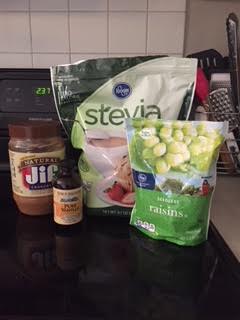 I discovered these delicious little morsels while researching recipes to offer a client with a gluten allergy. Of course there are gluten-free flour mixes that she could substitute for wheat flour, however I was looking for something cheap and easy for her to throw together using ingredients she likely had in her pantry. Enter these four ingredient peanut butter cookies! Ingredients: 1 cup peanut butter (I used crunchy but smooth would work just fine) 1 cup Stevia Baking Blend (Splenda No Calorie Granulated Sugar Substitute would work as well) 1 large egg 1 teaspoon vanilla extract 1/2 cup raisins (optional) 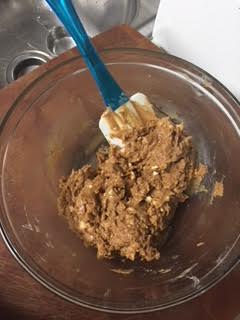 Instructions: 1. Combine all 4 ingredients into a large bowl and stir until well combined 2. Form cookies into 1- inch balls and place on a baking sheet 3. Gently press tops of cookies with a fork to flatten 4. Bake at 325F for 12-15 minutes until slightly browned 5. Place on a wire rack to cool 6. Enjoy! *I added raisins because I had them on hand and thought they would add a nice sweetness and texture to the cookies. You could also add chocolate chips, your favorite nuts or some shaved chocolate on top. Totally customizable! Those look pretty easy and delicious right? Now, lets get down to brass tax- how much are these little devils going to set you back? The answer may surprise you! The recipe above made about 14 cookies which winds up being about 120 calories per cookie. You might be thinking "Why would I bother with these cookies if they still have 120 calories in them?!?! I may as well just reach for the box!" Well, lets talk about what you get for that 120 calories: 3.5 grams of protein 6 grams of healthy unsaturated fat 5 grams of carbohydrates Conclusion: You get all of the satisfying sweetness without all of the empty calories. As such, these cookies can serve as a sweet treat but also a nutritious snack or quick breakfast on the go. You can even make a big batch and freeze them for quick and easy grabbing. Even have your fur babies help you with cleanup! So next time you're looking for a way to treat yourself without sabotaging your health- look no further than your own pantry! Recipe adapted from: https://www.myrecipes.com/recipe/easiest-peanut-butter-cookies Fruit- The Natural Sweet Treat!In the summertime, there's nothing better than fresh fruit. It offers us an indulgent sweet treat but also packs a punch when it comes to vitamins and minerals. The problem is how to best utilize it. Ever see the 2 lb cartons of fruit on sale and think to yourself "That's a good deal, but I know I'll only eat a fraction of those strawberries before they go bad." Ever buy them anyway and get frustrated a week later when half of them are covered in mold and you kick yourself for not eating them sooner? What happens in the winter when fresh fruit isn't in season but you're still craving sweet treats? Never fear! I've got you covered with two ways to prolong the life of your fruit: 1) Dip it in chocolate for a decadent treat or homemade gift 2) freeze it and use it for smoothies or a healthy alternative to ice cream!  Chocolate Covered Strawberries Whats better than a juicy, sweet, perfectly ripe strawberry? A juicy, sweet, perfectly ripe strawberry covered in chocolate! While we tend to think of chocolate-covered strawberries as an expensive, ultra-decadent treat you buy for special occasions, they're actually surprisingly easy to make at home. Make them for yourself as an alternative to a candy bar or make them for as a gift for a special occasion (just because you didn't spend a bundle doesn't mean they will be any less appreciated!). Here's what you need: 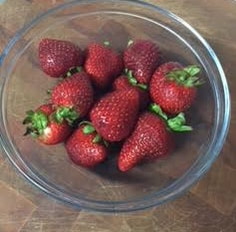 Ingredients: 1 lb fresh strawberries- washed and patted dry 6 oz semi sweet chocolate chips Instructions: 1. Melt the chocolate chips using a heat-safe bowl. Microwave on HIGH for approx. 30 seconds, stir and repeat until you have a smooth consistency 2. Allow chocolate to cool for 1 minute 3. Using hands or a fork dip the strawberries in the chocolate, twirling to seal the ends 4. Place strawberries on baking sheet lined with wax paper. Chill for 30 minutes until set 5. Share and Enjoy!  Frozen Fruit Smoothies and "Ice Cream" Frozen fruit is probably one of the most versatile, yet underutilized food commodities out there. It's easy, it stores well and you can opt to buy it for cheap or freeze your own depending on the season. But how many of us instead let our fresh fruit go to waste? It's no secret that buying in bulk can save you some serious cash, but when it comes to fresh fruits an vegetables it can be a challenge to consume them before the mass quantity goes to waste. And don't even get me started on bananas. You buy them in the store a little under ripe, thinking they'll be perfect in a day or two. Well turns out you were right but now ALL of them are ripe and you can only eat so many bananas at once. Enter gallon-size freezer bags and your freezer! Freeze any surplus fruit for quick and easy smoothies or an alternative to ice cream! These treats are totally customizable to your preferences and what you have on hand. All you need is a blender, frozen fruit and a little milk and you're off! For the smoothies shown above I used the following: 1/2 frozen banana 1/2 cup frozen blueberries 1 tablespoon almond butter 1 cup 1% milk Throw it all in the blender and blend until smooth! This made a smoothie about the consistency of a milkshake. If you are looking for a treat more the consistency of ice cream, use about 1/2 cup of milk and pop it in the freezer for 20-30 minutes before serving. It's the perfect sweet and refreshing summer treat! So there you have it! Three ways to treat yourself without overindulging. Keep following weekly for new recipes, shopping tips and meal planning ideas to help keep your health journey on track!
|
Erin Casey, MS, RD, LDLet's be honest, most dietitians go into the field for one reason: we LOVE food. Check out my weekly posts for recipes, healthy eating tips and goal setting strategies to help you live your best and healthiest life! Archives
August 2022
Categories |
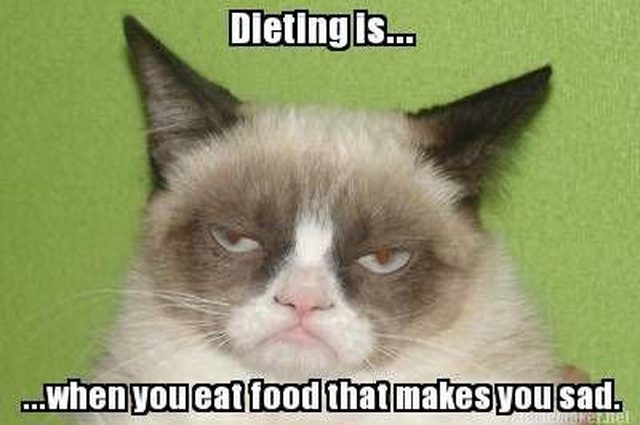
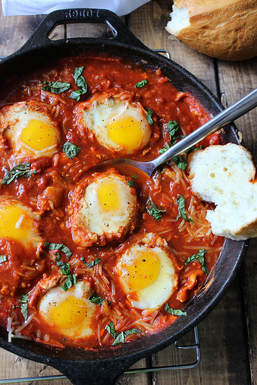
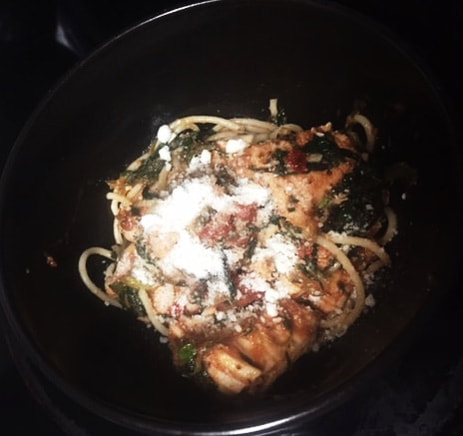
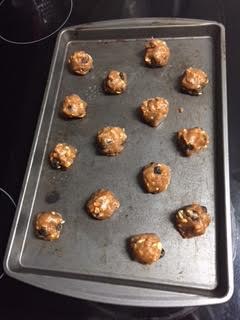
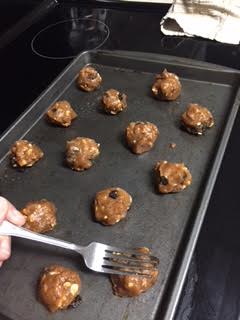
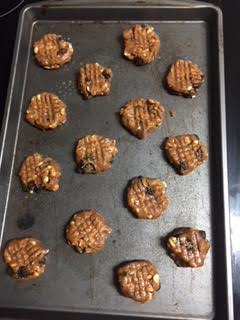
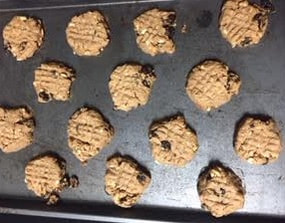

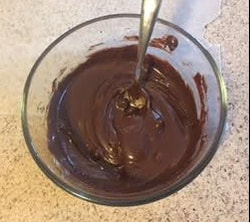
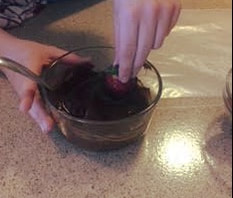

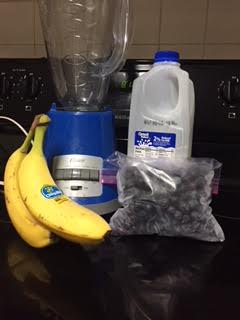
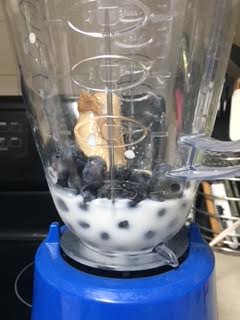
 RSS Feed
RSS Feed